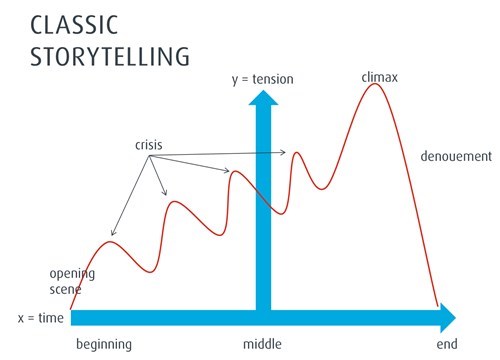Five new rules for storytelling
20 June 2013
People are natural storytellers. For centuries storytelling was how people preserved traditions and cultures around the world. Somewhere along the way the stories we told shifted in the B2B community. Stories became “case studies” and rising and falling action were replaced by metrics and proof points. Marketers let the story fade into oblivion and hammered buzzwords tied to “forward looking metrics” into prospective customer’s heads. We shouldn’t be surprised that customers stopped reading.
Stories are back
The tides are starting to turn, and the story is regaining relevance in marketing. Modern storytelling is picking up speed, and marketers are realizing that metrics and value propositions alone won’t resonate with their customers. Stories should be emotional. Storytelling requires a human-to-human connection – not a human-to-product messaging connection. We live in an attention economy, and you have to give the reader something she can connect with to have a fighting chance of holding her interest.
There is a classic structure to every good story. It begins with an opening scene. Over time, the reader is introduced to conflict and tension, escalating to a climax, and resolving with a conclusion that delivers an emotional impact.

Here are five rules to help you bring your customer stories to life:
1. Write your story like you would tell your story.
Too many marketers use inaccessible, corporate language and a stuffy tone that makes reading a case study feel like a chore. Connect with your reader by writing like you are having a conversation with an old friend. Buzzwords and jargon are alienating, and make your organization sound out-of-touch, or worse, unapproachable. Don’t just make your content tolerable to read – make it fun to read.
2. Tell your customer’s customer story.
Let’s say you’re writing a success story about how much your customer has achieved by using your services. That’s all well and good, but how does this success impact their customers? Try telling that story by digging down one level further. If your customer is saving money by using your solution, why not highlight how that is benefitting their customers?
3. Introduce tension!
Stories without tension are boring. No one wants to read a story where everything was perfect, then it got even more perfect. Tension is part of every great story, and there’s a way to balance tension between a narrative tool and publicizing your shortcomings. The best stories draw out the tension, conflict and suspense.
4. Make it easy for readers to relate to your story.
The traditional case study is alive and well because, even if the story is dry, it’s still a personal account of what “someone like me” went through, and that’s powerful. Case studies can just be So Much Better. If buyers can see themselves as the hero in a story, they’re more likely to move into action. Use universal themes to connect with your reader – justice, good versus evil, the underdog that wins. Make them want – or even better, NEED – to see how your story ends.
5. Try something new – Especially if it makes you uncomfortable.
It’s easy to tell the same customer stories over and over, but that doesn’t ignite passion or evoke a strong emotional response. It also makes you a crappy storyteller. Even telling the same story in a new or different way is a great place to start. Forget your company’s editorial restrictions and writing guidelines, and write a story you want to read. Better yet, write the story you want to tell. Why are you passionate about your organization? Why should others care? How is your company transforming the industry? Edgy, risky content can either achieve staggering success or teach invaluable lessons—both of which are well worth the effort.
There's a reason storytelling is one of the most ancient forms of communication. People attach to stories, they remember them and they re-tell them. The customers you make the heroes of their own stories today are the customers who are your greatest advocates tomorrow.
You are the hero of the marketing team, and this is your opportunity to overcome the tyranny of terrible storytelling and liberate the masses from bland, jargon-laden, formulaic case studies. Storytelling is at the heart of who you are as a marketer, and it’s time to do it really well.

